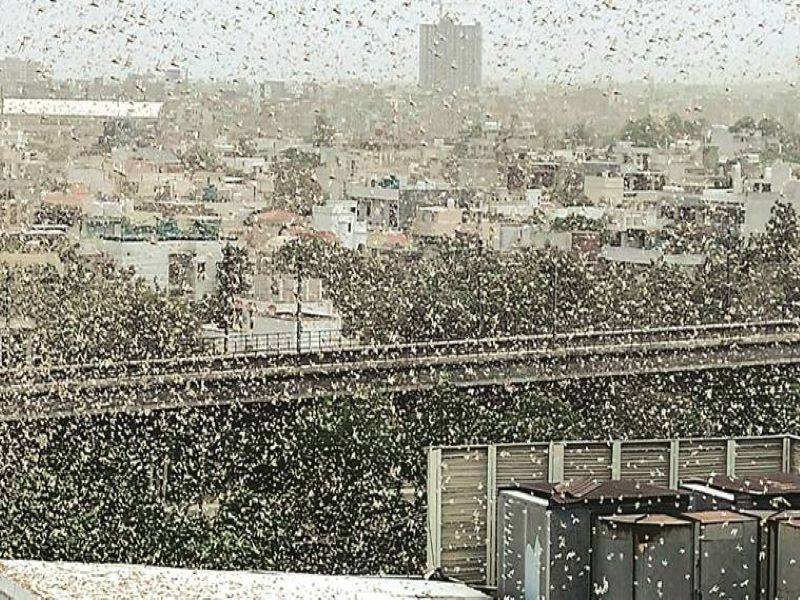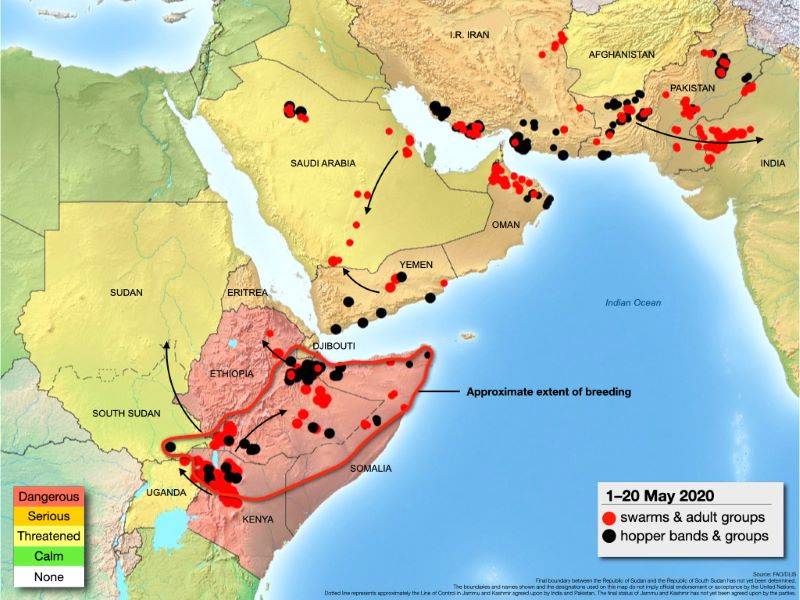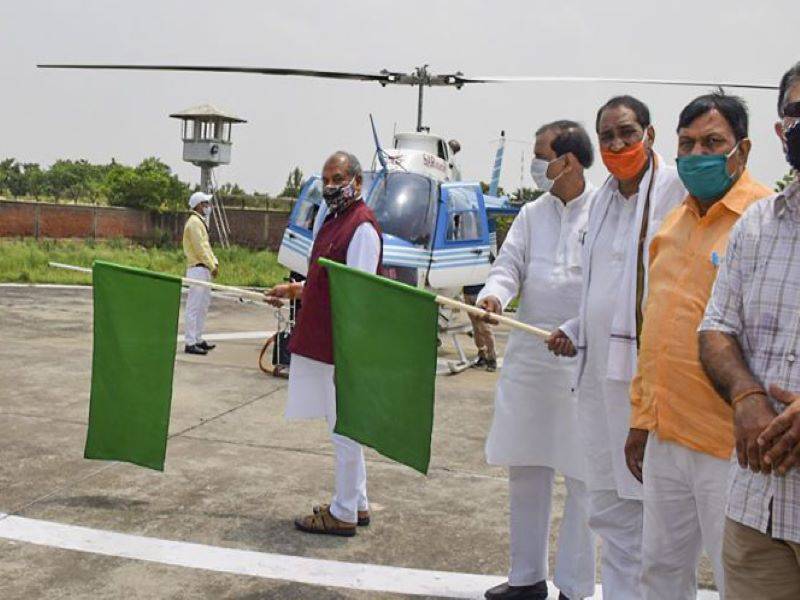
After using drones for locust control, the government has deployed helicopters for aerial spraying of pesticides to stop the spread of the swarms. Union Agriculture Minister Narendra Singh Tomar flagged off a helicopter with spray equipment from a helipad facility at Greater Noida in Uttar Pradesh on July 1.
Locust swarms over Gurugram created panic among residents of the national capital on Saturday morning. Later in the day, as the swarm moved to Agra and other regions of Uttar Pradesh bypassing Delhi, it came as a relief. Earlier, desert locusts had invaded Jaipur and Bhopal. While locust swarms are a nuisance for urban India, such pest attacks during the Kharif season are a real threat to the rural economy.
India is battling the worst desert locust outbreak after 2010, as per reports, an aggregate of 100 districts of five Indian States namely Rajasthan, Maharashtra, Madhya Pradesh, Uttar Pradesh and Gujarat are currently influenced. Authorities have cautioned that the swarms can additionally cause menace 12 States in the coming weeks. Union Agriculture Secretary Sanjay Agarwal held a meeting with Principal Secretary (Agriculture) of all the states and UTs on May 29 and issued an advisory and alert in Bihar and Odisha. The desert locust is possibly the most hazardous of the locust pests because of the capacity of swarms to fly quickly across huge spans. Union Agriculture Ministry has stated that there is no crop loss due to locusts and apart from this more than 1000 vehicles, including fire tenders and tractors, are fitted with spraying technology to tackle this menace. Even Drones and helicopters are now used to tackle the locust menace.

Why it matters ?
The United Nations Food and Agriculture Organisation (UN FAO) has estimated that a swarm of 40 million locusts can eat as much food as of 35,000 humans and apart from this world is already facing challenges of the coronavirus pandemic. This invasion could push hundreds of thousands of citizens of the world to the brink of starvation. According to the Indian Union Agriculture Ministry information, the locusts have damaged the crops of worth Rs. 10 crores during the year 1926-31 plague cycles. During the 1940-46 and 1949-55 year locusts plague cycles, the damaged was assessed at Rs. 2 crores for every cycle, and at Rs. 50 lakh during the last locust plague cycle of 1959-1962.
How they entered India in 2020?
Even before the coronavirus pandemic widespread across the world this year, another even more conspicuous plague of desert locusts spread over East Africa areas. It's widespread across the Horn of Africa, Yemen, Oman, Southern Iran and Pakistan's Baluchistan and Khyber Pakhtunkhwa and now reached India. UN Food and Agriculture Organization (FAO) predicted the worst was still to come and that by June, the size of the swarms could grow by a factor of 500 it will widespread.
The outbreak began with heavy rains from two cyclones in May and October of 2018 that hit the southern Arabian Peninsula. This climatic conditions favoured desert locusts to form into swarms and each generation was 20 times bigger than the previous one. After that Kenya, Ethiopia was mostly effected by 2019 and then it started moving towards Pakistan and finally to India in 2020. Not only has this Cyclone Amphan in the Bay of Bengal favoured these swarms to effect western part of India but also attracted swarms towards eastern areas of India.

Thus the main meteorological drivers behind the current desert locust’s invasions are unseasonal heavy rains in the mainspring which is the breeding period and strong westerly winds. As it happened during the COVID-19 pandemic when the world is struggling even due to lockdown most countries’ are also facing a shortage of food and desert locust menace has created havoc in the nation, to this Keith Cressman, senior locust forecasting officer with the FAO says, “The timing is horrendous because the farmers are just planting, and the seedlings are just coming up now since it's the beginning of the rainy season."
How desert locusts are different from other locusts?
Desert locusts (Schistocerca gregaria) are a short-horned grasshopper, found mainly in Africa. It has three stages life cycle - the egg, the nymph known as a hopper, and the winged adult and lives for about three months. Desert locusts have two phases one is the solitary phase and the other is the gregarious phase. The solitary phase has shorter wings, live in isolation, longer legs, and a narrower pronotum, or dorsal sclerite than the gregarious phase. When desert locusts meet in the group their nervous systems release serotonin which causes them to become mutually attracted towards each other and forms swarms. Gregarious locusts are brighter in colour, move faster, and forms swarms. It is in this phase that locusts from the oppressive swarms that can blacken the skies and decimate crops. The initial group of gregarious hoppers is known as an "outbreaks", and when these join together into larger groups is known as an "upsurge". Each locust can eat as much as its weight so a swarm of such size would eat 423 million pounds of plants every day. This transformation of locust in two phases has been widely compared with the story of Jekyll and Hyde by R. L. Stevenson.















